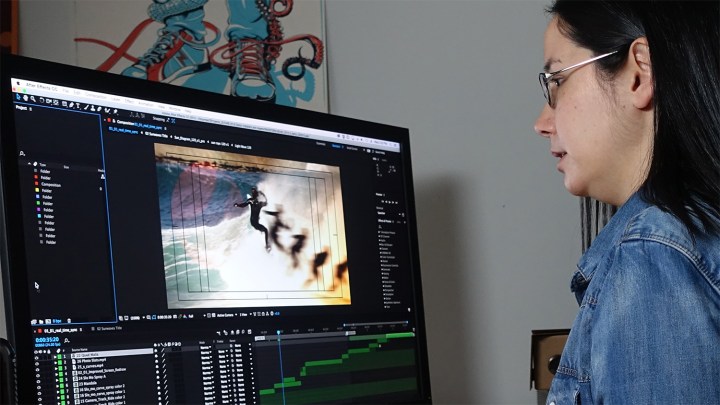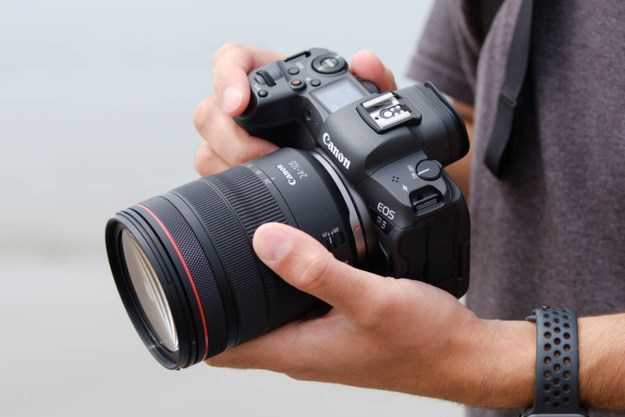
In an unheated, defunct imperial knife factory in Providence, Rhode Island, a small team of young Brown and Rhode Island School of Design grads used task lamps to keep their fingers warm as they typed. The exposed beams and sandblasted brick made for a nice visual atmosphere, but turning on the furnace would cost far too much to keep the old building warm.
The year was 1992, before the world wide web was, well, wide, and the group of ten or so team members making up the Company of Science and Art (CoSA) had already failed at one project: Selling digital magazines on CD-ROMs via snail mail. Now, another project was in jeopardy. Apple had just launched QuickTime, a serious competitor to the small company’s own video playback app, PACo Producer.
With maybe six months of cash left to burn, the team grasped for one last possible lifeline in an attempt to pivot and re-invent themselves. And what they created was nothing short of a revolutionary piece of software that went on to power the special effects in a wide range of blockbusters; a program we know today as Adobe After Effects. After launching out of beta in 1993, After Effects is now celebrating its 25th anniversary.
An idea born of desperation
After Effects did to animation and motion graphics what Photoshop did for photography and graphic arts by providing a layer-based system for animation design. Creating digital animations before After Effects was possible, but other programs limited the number of layers to just two or three. After Effects had no such limit, giving creators far more flexibility.
“We were just trying to keep the company alive — we were just trying to survive.”
The layer-based essence of After Effects, where every layer can be a video, was there from the very first version, but other trademarks of the software, including the timeline that allows you to navigate to different frames, was missing. Instead, the animators navigated using pause, play, fast forward, and rewind controls. Rendering the animation on that very first version took long enough that the task was often left to run overnight.
Dave Simons, one of the original creators at CoSA who now works with Adobe’s young Character Animator program, said that the team knew their little operation wouldn’t be able to compete with Apple’s QuickTime. When they brainstormed ideas, they tossed out everything from a mosquito spray to what became After Effects. Animation software was more in line with their earlier work and something they wished they had at hand when creating digital magazines on CD-ROMs, so going that direction made perfect sense.

“We were just trying to keep the company alive — we were just trying to survive,” Simons said. “I consider myself very lucky that we were at the right time and right place. We had great people working on it, but a lot of things had to come together for it to become the success that it is. It’s still shocking to me, and it’s still growing. More and more people use it.” Simons still works with some of the original After Effects team from COSA at Adobe, including interface “surgeon” David Cotter, Daniel Wilk, and Paul Uusitalo.
The concept for the software was partially inspired from the tedious process of creating keyframe animations using Photoshop to design each frame individually. The group also found inspiration watching music videos on a stack of seven second-hand TVs all tuned to MTV — back when MTV actually showed music videos.
Adobe initially turned it down
The team spent nine months creating After Effects, running on a bare minimum budget (hence, the unheated building). They approached several large companies for funding, including Adobe, but found no takers. Thankfully, QuickTime actually helped create a higher demand for PACo Producer, giving the struggling company a few more months than they expected and keeping them afloat until the release of After Effects in January 1993.
After Effects has kept the original essence while vastly expanding the tools for creating animations and composites.
The software was not only enough to save the company, it also attracted large buyers. COSA was acquired by Aldus, which in turn merged with Adobe in 1994, where After Effects found its forever home. That new ownership also meant the program could grow far beyond its original scope, integrating with Photoshop and eventually becoming part of today’s Creative Cloud suite of applications.
Since then, Adobe After Effects has kept the original essence while vastly expanding the available tools for creating animations and composites. A timeline was added in the second version while support for three-dimensional animations came in version 5. More recently, Adobe expanded the collaborative capabilities of After Effects, enabling distributed teams to work on the same project in near real time.

After Effect’s first major Hollywood use was to create an on-screen animation in Jurassic Park, when an animated Dennis Nedry pops up on a computer and says, “Ah ah ah, you didn’t say the magic word!” Since then, the program has become a common tool in the industry. The software is often used, like in that original on-screen animation, to create fake user interfaces on futuristic computers, including the flashy heads-up display graphics in Iron Man 3, but its capabilities have branched out into many other areas of special effects. The program is also commonly used for creating credits, and is part of Pixar’s toolkit for making its stylish animated credit sequences.
“I’m not an artist, but I love creating tools that let artists be more efficient and expressive, to give them the tools to express,” Simons said. “To be able to aid in the creation of that kind of art, and moving images of all types, is still very satisfying to me and what drives me.”



